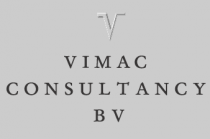Printing ebooks and protected courseware - what are the options for publishers and end users?
EDINBURGH, United Kingdom, Nov. 19, 2018 /PRNewswire-PRWeb/ -- Almost all ebooks and "private" electronic publications (e.g. training courseware) are created using tools like MS Office and Adobe InDesign, and then generated in PDF or ePUB format for distribution. For formatted and color documents PDF is the most widely used. For flowable text, such as website display of documents and simple text documents (e.g. fiction books), ePUB is the format of choice. Here we include Kindle formats in the general ePUB family.
Printing of standard (unprotected) PDF documents is widely used and the results are excellent. PDFs are sometimes "protected" by standard PDF security that is supposed to prevent them from being printed, but in practice this only applies to their use with selected PDF readers - the printing controls can usually be removed with free online or offline software and many third party PDF readers simply ignore this kind of control mechanism. But for PDFs that are strongly encrypted and secured with a document rights management (DRM) service, printing is generally disabled, so is not an option.
In this situation there are two main options for publishers:
The first option is to use a DRM service that does support permission to print, with the additional protection that printing to non-physical devices (e.g. to a PDF or Image) is not permitted. Services from companies such as Drumlin Security (https://www.drumlinsecurity.com), Locklizard (https://www.locklizard.com) and others offer this kind of print functionality. As an extra protection the output can include both static and dynamically generated (intelligent) watermarking to ensure that the printed result is reasonably safe from being scanned and turned back into a PDF file. Publishers may also be able to opt to specify how many pages from the document can ever be printed, or to restrict the user to printing a particular subset of the pages. These services are ideal for a full-range of publication types, including documents that change frequently or are one-off, books of any length, and courseware documents such as slide presentation hard copies. Of course nothing can prevent printed output being scanned and/or photocopied, so intelligent watermarking is strongly advised for many documents. This has always been the case for printed materials and books, so is essentially the same issue that has been around for decades in the print media world.
The second option is to make printed copies of the publication available via state-of-the-art print-on-demand services. For books and similar larger documents, two excellent services are recommended. The first of these is Amazon's "Kindle Direct Publishing" (KDP) service (https://kdp.amazon.com/en_US/). Despite its name and history, this service no longer requires you to create a Kindle version of your publication (although you may wish to do so anyway). Instead it now offers the option to create high quality print-on-demand (POD) paperback versions of your publications, available for public purchase via Amazon. They do all the hard bits, like printing the book and cover when the order is placed, handling the e-commerce and distributing the book within a few days to the customer worldwide. There are no setup costs and low per copy print costs, plus a high percentage of the net receipts is paid to the author/publisher. Currently hardback POD is not offered, but the second service we recommend does provide hardback POD and a full range of distribution options (including Amazon and traditional book wholesalers), with 100% of net receipts paid to the author/publisher. This service is offered by another of the World's largest providers in this sector, Ingrams, via their Lightningsource operation (https://www.ingramcontent.com/publishers/print). Setup is not free but remains relatively low cost, and turn-around is very fast with delivery in a few days from ordering. These services are ideal for mono (non-color) publications that are designed to be sold to the public, but distribution can be restricted to private distribution.
Printing of ePUB publications is a rather different matter. Typically specialized eBook readers do not provide print functionality and the files are protected against printing. However, online and offline tools for the removal of ePUB DRM protection are commonplace, making the unprotected ePUB file available to be printed or converted to a more suitable format (such as PDF or Word). The converted file may then be printed, which is great for end users but no so great for publishers of course. For general handling of ePUB files, including display and conversion to other formats, the free ePUB management software, Calibre, is recommended (https://calibre-ebook.com/). Calibre is available for Windows, Mac OSX and Linux.
Finally, any electronic publication that is viewed on a mobile phone or tablet device (and some other devices) can be captured, page by page, often using the hardware screen capture facility that is built into these devices. The captured image can then be exported to a more suitable device and printed, or multiple pages assembled and then printed as a document. This is a simple but tedious process for end users, and may be subject to additional protection (watermarking) by the publisher.
About the author: Dr Mike de Smith is a company director and academic, with a number of internationally acclaimed publications to his name. His publications are available without charge in web-based format for students, academics and professionals around the world, and in printable and non-printable electronic formats, plus printed POD versions available in paperback and hardback (see further http://www.spatialanalysisonline.com/ and https://www.statsref.com/).
SOURCE Michael de Smith





